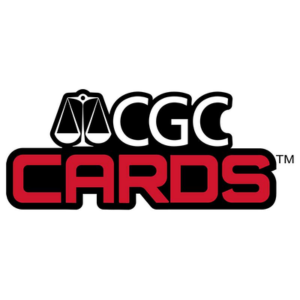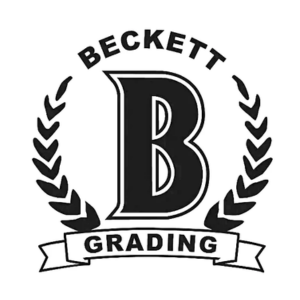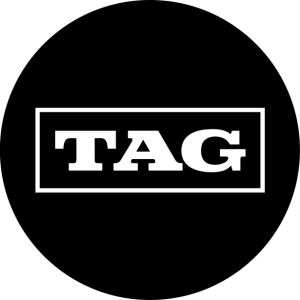Which Grader Should I Use?
Posted by Dee on 19th Mar 2025
So, you’ve decided to grade your cards. What now? In the wild world of collectibles, there are multiple grading companies vying to get their hands (or in some cases their machines) on your cards. But who should you be shopping with? In this article we’ll review some of the pros and cons of each grading company so you can make a more informed decision about your cards.

Pros:
1. Cost: At $12 per card for bulk submissions (minimum of 25 cards), CGC is still the most affordable grader on the market. They have no additional charges for receiving higher grades and do not offer subgrades, so you know exactly how much you’re paying up front.
2. Rising Popularity: CGC began as a comic book grading company 25 years ago. In recent years, they have started gaining popularity in the graded card community. They have now graded over 8 million cards and have a robust database to compare your cards to.
3. Pristine labels: In 2024 CGC changed their grading scale and released the “Pristine” gold label. They argue that a card graded at a gem mint 10 could still carry small imperfections, while pristine 10 cards are practically flawless.
Cons:
1. Inconsistency: Human error is inevitable, but it can be impactful when it comes to the grades on your cards. Submitting multiple orders and finding varying grades can be a bit disheartening. But honestly, all graders make similar mistakes. And truthfully, we may just notice it more because we work with CGC more than other services.
2. Lower resale value: Although it is a big name in the business, CGC still doesn’t carry the premium that some other graders have. A CGC graded 10 Pokémon card could sell for nearly 20% lower than the same title and grade from PSA.
3. No subgrades: With the release of their new labels in 2024, CGC did away with subgrades. This was met with mixed responses from the collector community. Some folks enjoy the clean look of the label, while others preferred being able to see exactly why their card got the grade it did.

Pros:
1. Respected across industries: Unlike some graders, PSA has broken boundaries between hobbies. Both baseball and Pokémon card collectors lean towards PSA as their preferred grader because of the reputation they have built for themselves. PSA was founded by the owner of PCGS (Professional Coin Grading Service), so they came on strong and haven’t slowed down since.
2. Notoriously difficult graders: A PSA 10 can be considered the best of the best because they are so strict on their grading scales. This could be considered a pro or a con depending on whether you’re submitting your cards or purchasing a pre-graded card.
3. Higher resale value: Because of their reputation and uncompromising grading scale, PSA slabs nearly always maintain or rise in value over time. As mentioned earlier, A CGC graded 10 Pokémon card could sell for nearly 20% lower than the same title and grade from PSA.
Cons:
1. Scaling prices: Grading through PSA can give you a little bit of sticker shock. If you’re not a part of their Collectors Club, grading starts at $25 per card. However, if you’re submitting cards regularly, that price can drop down to $17.
2. Turnaround time: If you’re looking for instant gratification, PSA is not the grader for you. Before shipping times, it is a minimum of45 days for the cards to go through the full process. But as they say, good things come to those who wait.
3. No 9.5s: Half grades with PSA are already uncommon, but once you’ve passed 8.5, you’re looking at a 9 or a 10. In a public statement, PSA said that they “felt it was not necessary to add a third Mint grade since PSA already has a Mint 9 and Gem Mint 10 grade as part of the current scale.”

Pros:
1. Established: BGS stemmed from the company Beckett Media, who published baseball-focused magazines in the 80’s. When they expanded into grading services, they were already well recognized in the baseball card community and were easily accepted by the community.
2. Subgrades: While other graders have shied away from subgrades, BGS is still holding strong. For collectors who want to know the exact condition of each part of their card, BGS is the go-to. Subgrades are typically preferred by Magic: The Gathering collectors but have become more common in other hobbies as well.
3. Black labels: Like CGC’s Pristine 10, the BGS Black label is reserved for cards that score a perfect 10 on all subgrades. BGS has been offering the black label since 2014, so it’s more common to see these on the market. However, that doesn’t mean it’s easier to receive a black label 10, so it’s still heavily sought after.
Cons:
1. Fraud: This can be a touchy subject but should be addressed, nonetheless. In 2024, BGS’s owner Greg Lindberg plead guilty to over $2 billion in insurance fraud. Since then, they have been struggling to maintain their reputation. However, it is important to note that one man committing fraud is not reflective of the legitimacy or hard work of all the people employed by BGS.
2. Turnaround time: Like PSA, BGS has quite a long turnaround time. Though they quote a 25-day turnaround time on their site, the general consensus in the community is that it’s around 35-40 days for processing.For many collectors, that is just the added cost of getting those subgrades.
3. Inner sleeve:BGS puts all cards in a sleeve before sealing the slabs. Though it is another level of protection, the inner sleeve allows for a bit of card movement. This can cause the card to become off centered in the slab, which is not ideal for display.

Pros:
1. AI grading: TAG is most well known for its AI grading system. AI grading eliminates the risk of human error that can be prevalent with all the above graders. It’s not uncommon for collectors to crack and resubmit cards that they feel were under-graded, only to be proven correct when the card returns with a higher grade. With TAG, your grades are not affected by the state of mind or mood that the grader is in.
2. Paperless flip/tag: Another thing that sets TAG apart is that their slabs do not have paper flips or tags like the other graders. The grade is etched directly into the slab itself, making it impossible for someone to tamper with the flip and make a card appear in better condition than it is.
3. Grading report: TAG has an incredibly thorough grading report with a rating scale of 1-1000 points. When your card is returned, you’re able to look at the database and see exactly why your card was given its grade. This provides more clarity than other graders can provide.
Cons:
1. Lower resale value: Because TAG is so new to the market, its resale value is not in line with other graders. However, week after week it is gaining momentum. This could be a temporary con that diminishes over time, but it’s currently too early to know if AI grading is just a fad or here to stay.
2. AI grading: AI is still new and rapidly changing by the day. Just like human intelligence, it is learning and growing which can affect how grades are distributed. What elicits a 10 today may be different if they update their system. How that will affect the company in the long-term is still unknown.
3. New: You may have picked up on this from the previous two cons. There are still so many unknowns when it comes to TAG and AI grading in general. This could be the next big thing for the industry or phase out completely. That can create significant risk for those intending to resell.
Overall, there is no easy answer to who you should grade your cards with. It will always come down to individual preference. But now you have a little more information going forward to hopefully help you make the right decision for your collection. If you ever have questions, feel free to reach out to us via our Contact Us form.

